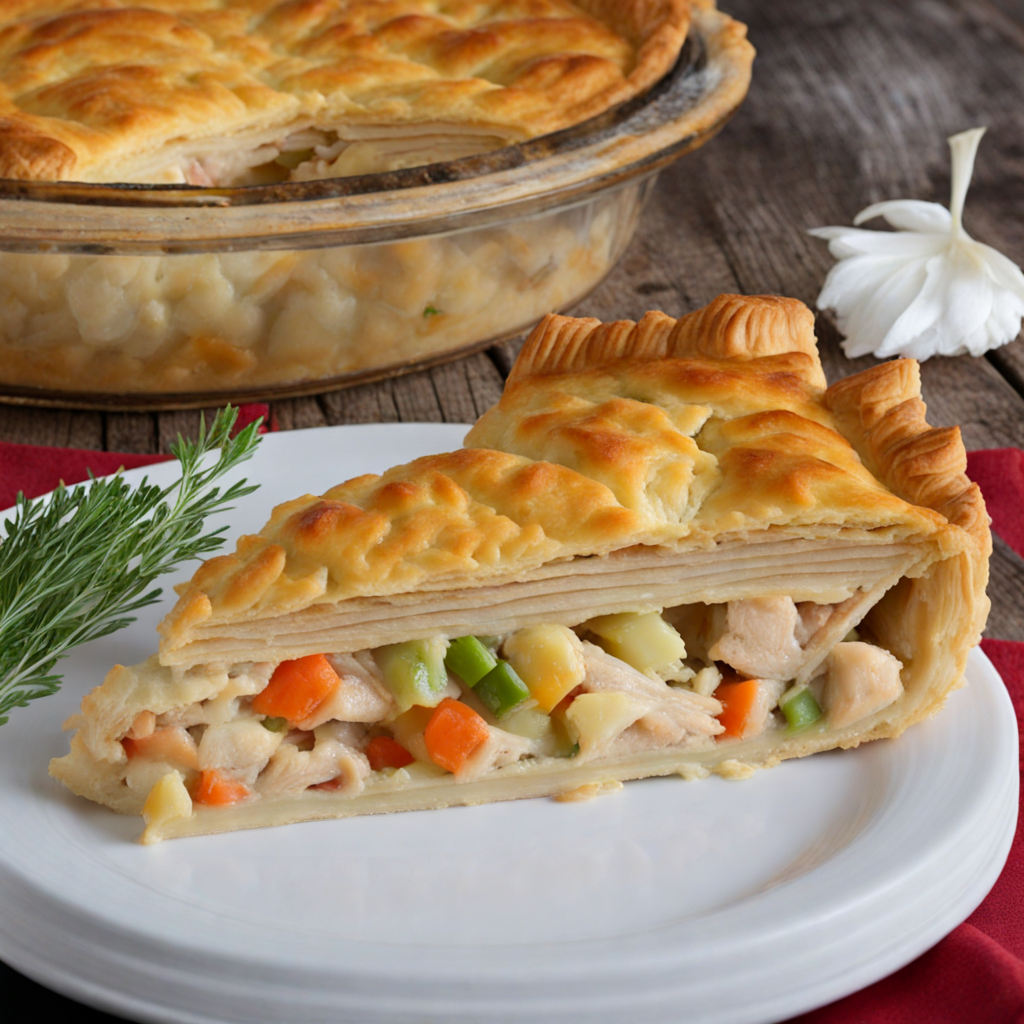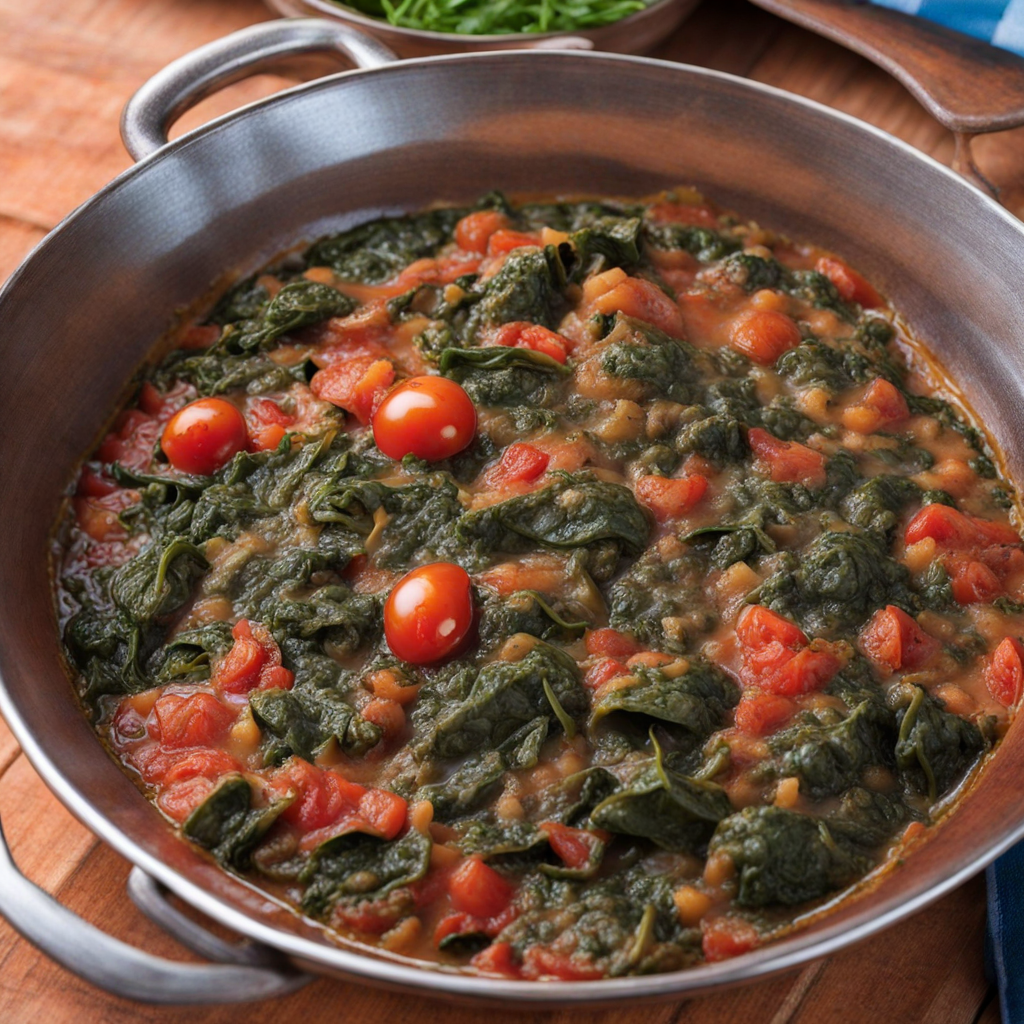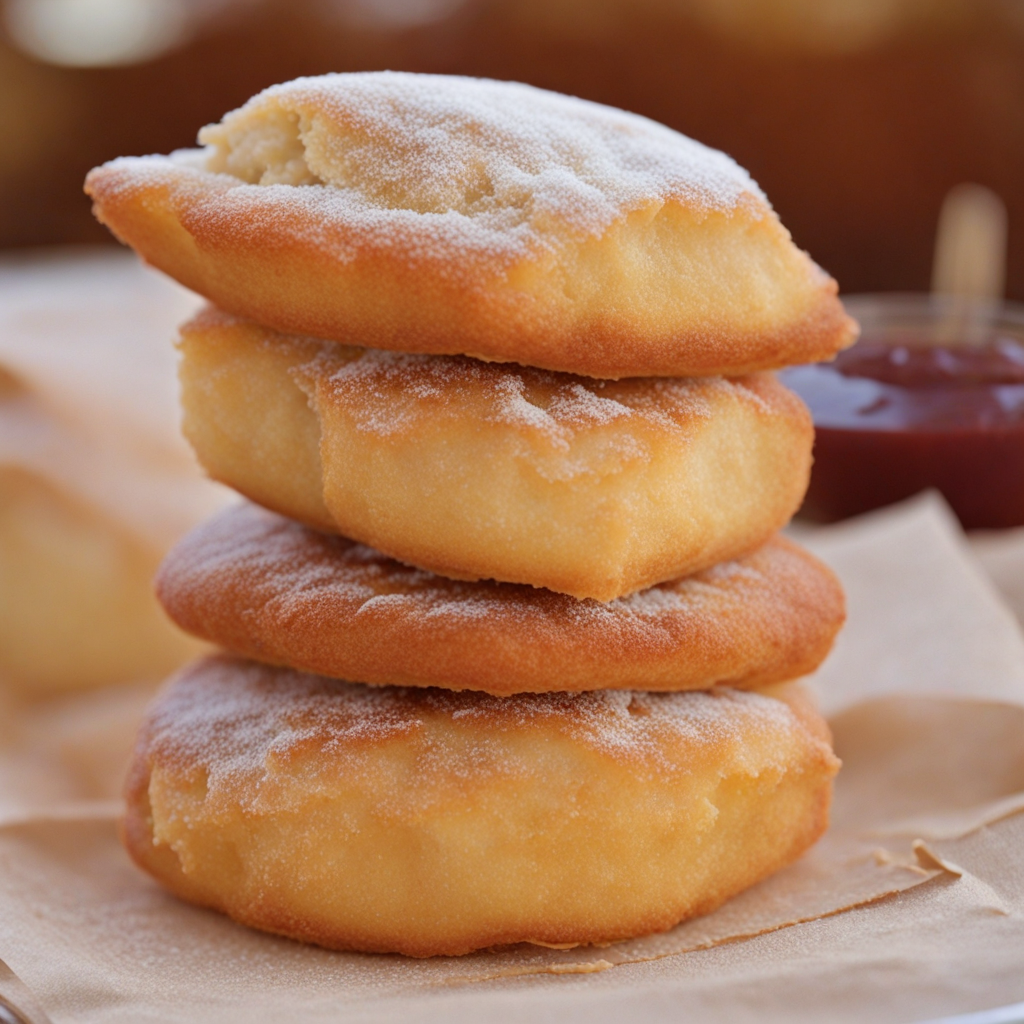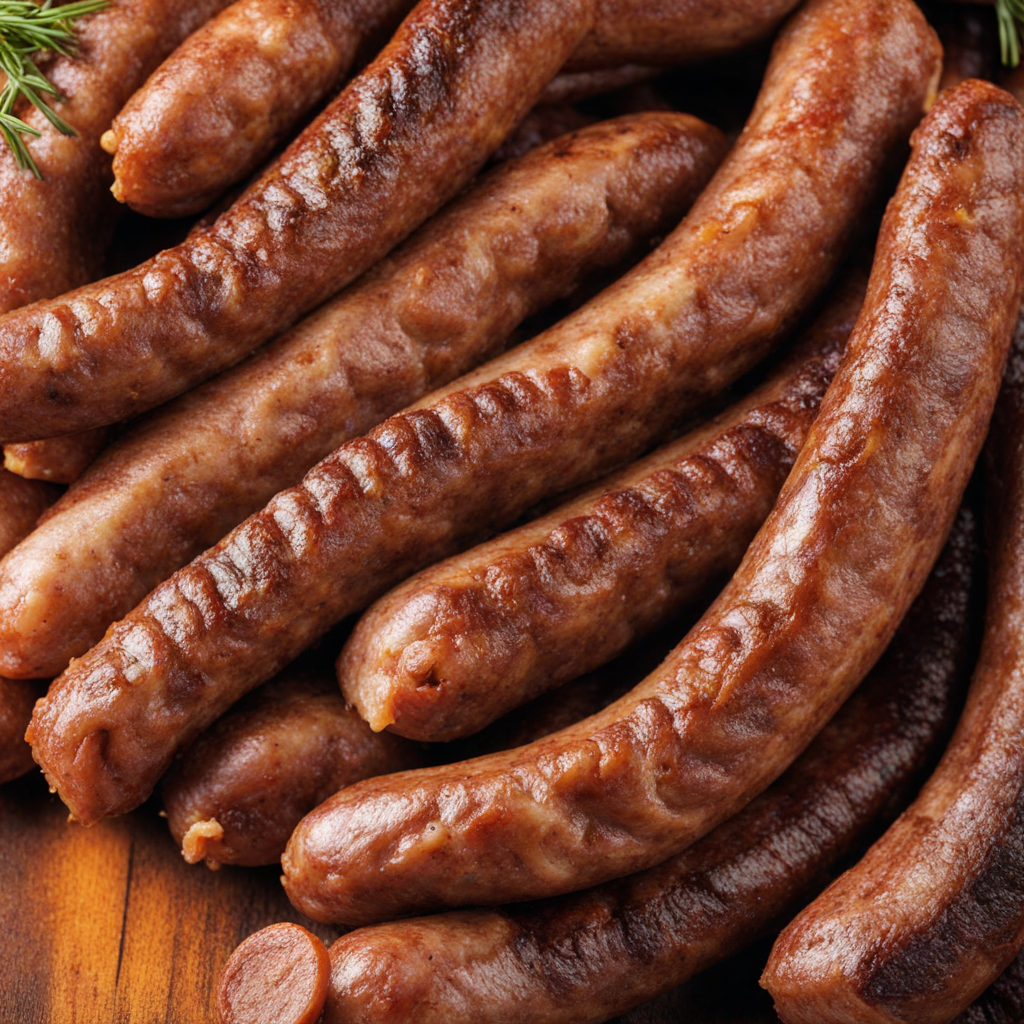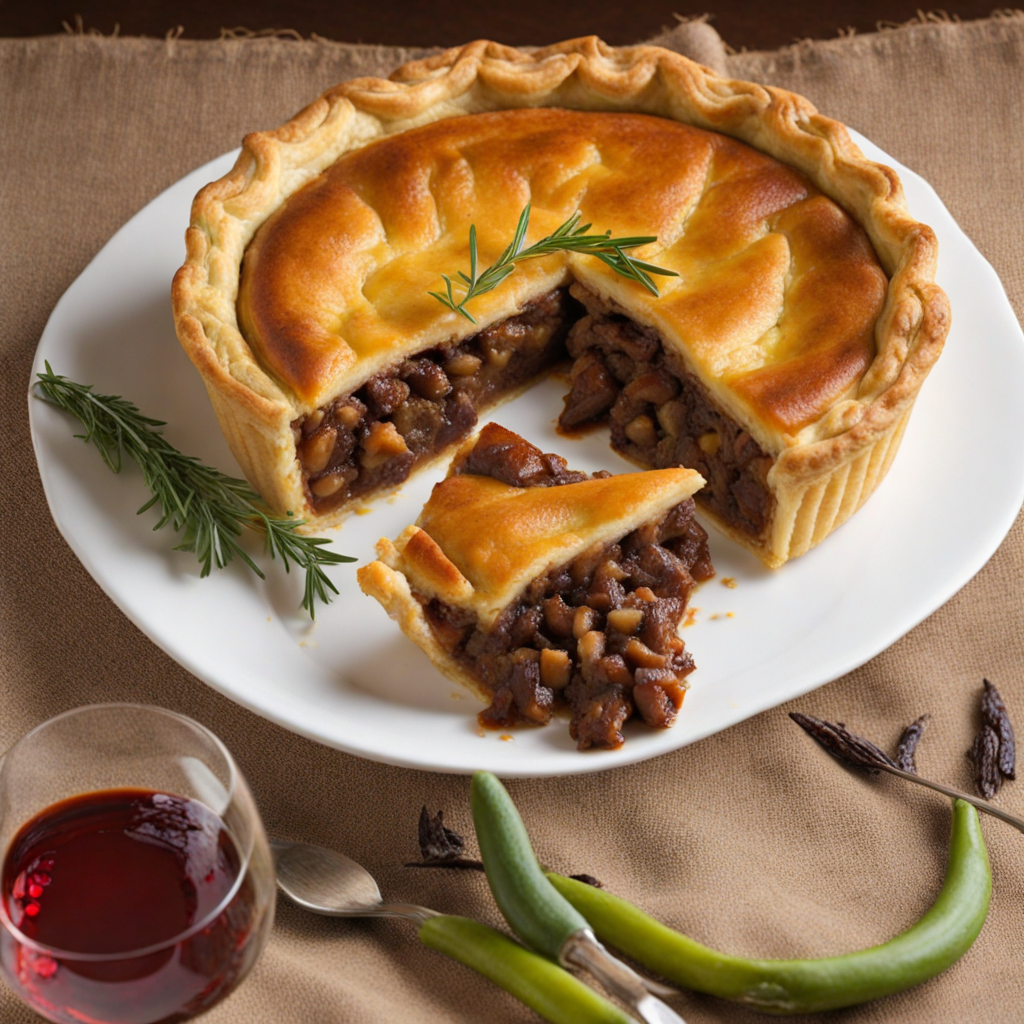Chicken Pie
Chicken Pie is a delightful dish that embodies the rich culinary traditions of Namibia, often enjoyed as a comforting meal. This savory pie is typically crafted with tender chicken pieces that are marinated in a blend of local spices, which adds a unique depth of flavor that reflects the region's diverse influences. The chicken is often simmered with vegetables such as carrots and peas, creating a hearty filling that is both satisfying and nourishing. The use of local ingredients highlights the freshness and authenticity of Namibian cuisine, making each bite a true representation of the country's flavors. What sets Chicken Pie apart is its flaky, golden crust, which is made from a mixture of flour, butter, and sometimes a hint of baking powder for extra lightness. This crust serves as a perfect vessel for the rich filling, encasing the warmth and flavors within. When baked to perfection, the crust achieves a delightful crunch that contrasts beautifully with the tender filling, providing a satisfying textural experience. Many families have their own secret recipes for the crust, often passed down through generations, adding a personal touch to this beloved dish. In Namibia, Chicken Pie is often enjoyed during gatherings and celebrations, making it not just a meal but also a symbol of togetherness. It is commonly served alongside a fresh salad or a side of local chutney, which adds a tangy kick that complements the savory pie beautifully. As you take your first bite of Chicken Pie, you'll discover a harmonious blend of flavors and textures that invite you to savor the comforting essence of Namibian cuisine.
How It Became This Dish
Hoenderpastei: A Culinary Journey Through Namibia When one thinks of Namibia, images of vast deserts, vibrant wildlife, and rich cultural diversity often come to mind. Yet, nestled within this stunning landscape is a dish that embodies the heart and soul of Namibian cuisine: Hoenderpastei. This traditional chicken pie, deeply rooted in the country’s history, showcases not only the flavors of the region but also the cultural significance of food in Namibian society. Origins of Hoenderpastei Hoenderpastei, directly translated to "chicken pie" in Afrikaans, has its origins intertwined with the colonial history of Namibia. The dish reflects a blend of indigenous culinary practices and the influences brought by European settlers, particularly the Dutch and the British. In the late 19th century, Namibia was part of German South West Africa, which introduced various European ingredients and cooking techniques to local cuisines. Before the arrival of these settlers, indigenous Namibian tribes, such as the Ovambo, Herero, and San, cultivated a diet based primarily on local ingredients – grains, meat from game, and seasonal vegetables. However, as colonizers began to establish farms and trade routes, the introduction of domesticated animals, such as chickens, transformed local cooking practices. Hoenderpastei emerged as a way to utilize these newly available ingredients in a comforting, hearty meal that could feed families and communities. Cultural Significance Hoenderpastei holds a special place in Namibian culture. It is more than just a meal; it is a dish that signifies family gatherings, celebrations, and communal bonds. Traditionally, food in Namibian culture is a means of bringing people together, and Hoenderpastei is often served at significant events such as weddings, birthdays, and public holidays. The preparation of this dish is a communal affair, with family members coming together to cook, share stories, and create memories. Moreover, Hoenderpastei reflects the resilience of Namibian people. During times of hardship, especially during the struggles for independence in the late 20th century, the dish became a symbol of comfort and sustenance. Families would often make use of available ingredients to prepare the pie, showcasing their ability to adapt and find joy in the simplest of meals. The pie's hearty nature made it a staple during difficult times, reinforcing its status as a comfort food within Namibian households. Development Over Time As Namibia’s political landscape evolved, so too did its culinary traditions. After gaining independence in 1990, there was a resurgence of interest in traditional foods, and Hoenderpastei saw a revival as people began to embrace their culinary heritage. The dish was not only appreciated for its taste but also for its historical significance, serving as a reminder of Namibia's journey towards self-identity. In contemporary Namibian cuisine, Hoenderpastei has evolved into various iterations, often influenced by modern cooking techniques and international flavors. While the classic version typically consists of a savory chicken filling, rich with spices and herbs, encased in a flaky pastry, chefs and home cooks alike have started experimenting with different ingredients. Some variations include the use of vegetables like spinach, mushrooms, or peppers, while others may introduce spices from the diverse cultural tapestry of Namibia, such as garlic, ginger, or chili. The rise of culinary tourism in Namibia has also played a role in the evolution of Hoenderpastei. As tourists flock to experience the natural beauty and cultural richness of the country, local chefs have embraced the opportunity to showcase traditional dishes. Restaurants now serve Hoenderpastei alongside other traditional foods, often with a modern twist, appealing to both locals and visitors. This exposure has helped to preserve the dish's historical roots while also allowing it to adapt to contemporary tastes. Ingredients and Preparation The traditional recipe for Hoenderpastei is relatively simple, yet it is the care and love put into its preparation that makes it special. The key ingredients include chicken, onions, garlic, a variety of spices, and either a shortcrust or puff pastry. The dish is typically prepared by first cooking the chicken, often in a flavorful broth, along with onions and spices until tender. The meat is then shredded and mixed with a creamy sauce, which may include flour and milk for thickness, before being encased in pastry and baked until golden brown. In many households, the preparation of Hoenderpastei is a cherished family tradition, passed down through generations. Elders often teach younger members of the family the techniques involved in making the perfect pie, emphasizing the importance of using fresh ingredients and cooking with love. This passing down of knowledge not only preserves the recipe but also reinforces familial bonds and cultural identity. Conclusion Hoenderpastei is more than just a dish; it is a living testament to Namibia's rich history, cultural significance, and the communal spirit of its people. From its humble origins in the kitchens of indigenous tribes to its place at the table during celebrations and gatherings, this chicken pie encapsulates the essence of Namibian cuisine. As Namibia continues to grow and evolve, so too will Hoenderpastei, adapting to new influences while remaining a cherished symbol of comfort and togetherness. In every bite of this delicious pie, one can taste the stories of resilience, heritage, and the unbreakable bonds of family that have shaped Namibia's culinary landscape. Whether enjoyed at a festive gathering or on a quiet evening at home, Hoenderpastei serves as a reminder of the importance of food in bringing people together and honoring the rich tapestry of culture that defines Namibia.
You may like
Discover local flavors from Namibia



